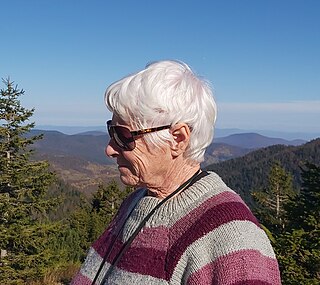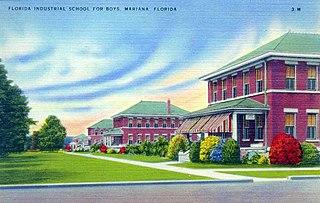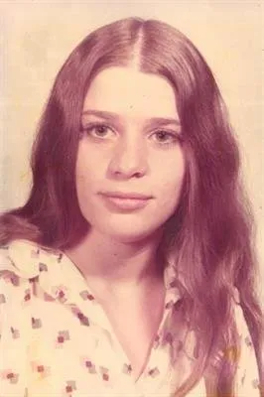Related Research Articles

Forensic anthropology is the application of the anatomical science of anthropology and its various subfields, including forensic archaeology and forensic taphonomy, in a legal setting. A forensic anthropologist can assist in the identification of deceased individuals whose remains are decomposed, burned, mutilated or otherwise unrecognizable, as might happen in a plane crash. Forensic anthropologists are also instrumental in the investigation and documentation of genocide and mass graves. Along with forensic pathologists, forensic dentists, and homicide investigators, forensic anthropologists commonly testify in court as expert witnesses. Using physical markers present on a skeleton, a forensic anthropologist can potentially determine a person's age, sex, stature, and race. In addition to identifying physical characteristics of the individual, forensic anthropologists can use skeletal abnormalities to potentially determine cause of death, past trauma such as broken bones or medical procedures, as well as diseases such as bone cancer.
Osteology is the scientific study of bones, practised by osteologists. A subdiscipline of anatomy, anthropology, and paleontology, osteology is the detailed study of the structure of bones, skeletal elements, teeth, microbone morphology, function, disease, pathology, the process of ossification, and the resistance and hardness of bones (biophysics).
A body farm is a research facility where decomposition of humans and animals can be studied in a variety of settings. The initial facility was conceived by anthropologist William M. Bass in 1981 at the University of Tennessee in Knoxville, Tennessee, where Bass was interested in studying the decomposition of a human corpse from the time of death to the time of decay. The aim was to gain a better understanding of the decomposition process, permitting the development of techniques for extracting information such as the timing and circumstances of death from human remains. Body farm research is of particular interest in forensic anthropology and related disciplines, and has applications in the fields of law enforcement and forensic science. By placing the bodies outside to face the elements, researchers are able to get a better understanding of the decomposition process.

Forensic facial reconstruction is the process of recreating the face of an individual from their skeletal remains through an amalgamation of artistry, anthropology, osteology, and anatomy. It is easily the most subjective—as well as one of the most controversial—techniques in the field of forensic anthropology. Despite this controversy, facial reconstruction has proved successful frequently enough that research and methodological developments continue to be advanced.

Karen Ramey Burns was an American forensic anthropologist known for work in international human rights. Her specialty was the recovery and identification of human remains in criminal, historical, archaeological, and disaster-related circumstances. She worked on a number of high-profile cases, including the Raboteau Massacre and trial in Haiti, the Río Negro massacre in Guatemala, victims of genocide in Iraqi Kurdistan, the Amelia Earhart search in Kiribati, Fiji, and the Northern Mariana Islands, and the identification of the Kazimierz Pułaski remains in Savannah, Georgia, United States. She was also active in international forensic training and taught human osteology and forensic anthropology at the University of Utah in Salt Lake City. she also was worked on identifying victims of 9/11. She was a 2007–08 Fulbright Scholar at the University of the Andes in Bogotá, Colombia, where she also worked with EQUITAS, a non-governmental organization dedicated to helping families of disappeared persons due to the ongoing Colombian conflict.

Susan Margaret Black, Baroness Black of Strome, is a Scottish forensic anthropologist, anatomist and academic. She was the Pro Vice-Chancellor for Engagement at Lancaster University and is past President of the Royal Anthropological Institute of Great Britain and Ireland. From 2003 to 2018 she was Professor of Anatomy and Forensic Anthropology at the University of Dundee. She is President of St John's College, Oxford.
FORDISC is a software program created by Stephen Ousley and Richard Jantz. It is designed to help forensic anthropologists investigate the identity of a deceased person by providing estimates of the person's size, ethnicity, and biological sex based on the osteological material recovered.
The Argentine Forensic Anthropology Team is an Argentine not-for-profit scientific non-governmental organisation. It was created in 1986 at the initiative of various human rights organisations with the aim of developing forensic anthropology techniques to help locate and identify the Argentines who had disappeared during the "Dirty War" period of the 1976–1983 military dictatorship. Since then, the Team's members have conducted field work in 30 other countries, including Bosnia and Herzegovina, Angola, Timor-Leste, French Polynesia, Croatia and South Africa. In particular, the EAAF acquired additional worldwide renown by identifying the remains of Ernesto "Che" Guevara, found in Bolivia.

Skeletonization is the state of a dead organism after undergoing decomposition. Skeletonization refers to the final stage of decomposition, during which the last vestiges of the soft tissues of a corpse or carcass have decayed or dried to the point that the skeleton is exposed. By the end of the skeletonization process, all soft tissue will have been eliminated, leaving only disarticulated bones.
Lapušnik or Llapushnik prison camp was a detention camp that was operated by the Kosovo Liberation Army, an Albanian militant organization, near the city of Glogovac in central Kosovo during the Kosovo War. It was operational in early 1998 and inmates were subject to intimidation, imprisonment, violence and murder. The victims were both Serbs and Albanians.

EwaElvira Klonowski is a forensic anthropologist. She took political refuge in Iceland in 1981, following the declaration of martial law in the People's Republic of Poland. She has been living in Reykjavik, Iceland since 1982. In 1996, she began working on individual and mass graves exhumation in Bosnia and Herzegovina. Since then, she has been responsible for the excavation and identification of over 2,000 victims, and in 2005 she was nominated to the list of the 1,000 Women for the Nobel Peace Prize.
Mercedes Doretti is an Argentine forensic anthropologist based in New York City. She is known for finding evidence of crimes against humanity. She was awarded a MacArthur "Genius Grant" prize in 2007.

The Florida School for Boys, also known as the Arthur G. Dozier School for Boys (AGDS), was a reform school operated by the state of Florida in the panhandle town of Marianna from January 1, 1900, to June 30, 2011. A second campus was opened in the town of Okeechobee in 1955. For a time, it was the largest juvenile reform institution in the United States.
Michael W. Warren is an associate professor emeritus and forensic anthropologist, at the University of Florida. He formerly served as the William H. Garmany Term Professor of Human Rights & Social Justice in the Department of Anthropology, and as Assistant Director of the William R. Maples Center for Forensic Medicine. Dr. Warren is a retired diplomate of the American Board of Forensic Anthropology. He was a board member of the Scientific Working Group for Forensic Anthropology (SWGANTH). He also served as a member of the Forensic Advisory Board of the International Committee for the Red Cross. From 2009 until his retirement, Dr. Warren was the director of the C.A. Pound Human Identification Laboratory, the University of Florida's forensic anthropology laboratory. The C.A. Pound Laboratory performs analyses of skeletal remains for many of the 24 medical examiner districts in the State of Florida.

Douglas W. Owsley is an American anthropologist who is head of Physical Anthropology at the Smithsonian's National Museum of Natural History (NMNH). He is regarded as one of the most prominent and influential archaeologists and forensic anthropologists in the world in some popular media. In September 2001, he provided scientific analysis at the military mortuary located at Dover Air Force Base, following the 9/11 attack in Washington, D.C. The following year, the US Department of Defense honored him with the Commander's Award for Civilian Service for helping in the identification of 60 federal and civilian victims who died when American Airlines Flight 77 hit the Pentagon.
Kari Bruwelheide is an American archaeologist and anthropologist. She is known for her work as a physical anthropologist, bioarchaeologist, and forensic anthropologist at the Smithsonian Institution's National Museum of Natural History.
Mortuary archaeology is the study of human remains in their archaeological context. This is a known sub-field of bioarchaeology, which is a field that focuses on gathering important information based on the skeleton of an individual. Bioarchaeology stems from the practice of human osteology which is the anatomical study of skeletal remains. Mortuary archaeology, as well as the overarching field it resides in, aims to generate an understanding of disease, migration, health, nutrition, gender, status, and kinship among past populations. Ultimately, these topics help to produce a picture of the daily lives of past individuals. Mortuary archaeologists draw upon the humanities, as well as social and hard sciences to have a full understanding of the individual.

The Nickel Boys is a 2019 novel by American novelist Colson Whitehead. It is based on the historic Dozier School, a reform school in Florida that operated for 111 years and was revealed as highly abusive. A university investigation found numerous unmarked graves for unrecorded deaths and a history into the late 20th century of emotional and physical abuse of students.
Phoebe Stubblefield is an American forensic anthropologist specializing in human skeletal variation, human identification, and paleopathology. She is currently the Interim Director of the C.A. Pound Human Identification Laboratory at the University of Florida. She was formerly an associate professor at the University of North Dakota, where she also served as Chair of the Anthropology Department and Director of the Forensic Science Program. Her research integrates cultural anthropology and forensic science. She is currently leading efforts to locate and identify the remains of hundreds of victims of the 1921 Tulsa race massacre.

Linda Marie Pagano, formerly known as Strongsville Jane Doe, was an American murder victim from Akron, Ohio who was an unidentified decedent for 44 years. Following an argument with her stepfather on September 1, 1974, Pagano left her stepfather's apartment and was never seen again. On February 5, 1975, partial skeletal remains of a white female were found by three boys in a park in Strongsville, Ohio. After remaining unidentified, the bones were buried in an unmarked grave. Due to a clerical error, the bones were never entered into databases of unidentified decedents, and the case was largely forgotten about. In 2016, a college student doing genealogy research of her own family rediscovered the unidentified body. After posting about it online, the case gained the attention of Carl Koppelman, a forensic sketch artist. The new attention to the case led to a connection being made by the Akron police, and in June 2018 the remains were conclusively identified as Linda Pagano.
References
- 1 2 "New Prints for Soeffker Gallery | Hamline University Newsroom". www.hamline.edu. Retrieved February 4, 2020.
- ↑ "USF | Anthropology | People | Kimmerle". www.usf.edu. Retrieved February 4, 2020.
- 1 2 3 Talafer, Janan (April 17, 2012). "USF Researcher Solves Crimes, IDs People From Bones, Tampa". 83Degrees. Retrieved February 5, 2020.
- ↑ Kimmerle, Erin H.; Baraybar, Jose Pablo (February 19, 2008). Skeletal Trauma: Identification of Injuries Resulting from Human Rights Abuse and Armed Conflict. CRC Press. ISBN 978-1-4200-0911-8.
- 1 2 3 4 5 "Discovery of Unmarked Graves Earns 2020 AAAS Scientific Freedom and Responsibility Award". American Association for the Advancement of Science. Retrieved February 4, 2020.
- ↑ Dailey, Kate (April 16, 2014). "Exhuming remains at Florida school". BBC News. Retrieved February 5, 2020.
- ↑ ""A real mystery": More possible graves uncovered at notorious shuttered reform school?". www.cbsnews.com. Retrieved February 5, 2020.
- ↑ "No Additional Remains Found At Dozier School For Boys". wusfnews.wusf.usf.edu. July 23, 2019. Retrieved February 4, 2020.
- ↑ Forensics and human rights | Dr. Erin Kimmerle | TEDxCarrollwoodDaySchool , retrieved February 5, 2020
- ↑ Holton, Jennifer (October 14, 2019). "USF's Erin Kimmerle testing human remains that may belong to Amelia Earhart". FOX 13 News. Retrieved February 4, 2020.
- ↑ "USF researchers to help Hillsborough County search for forgotten gravesites". WFTS. January 23, 2020. Retrieved February 4, 2020.
- ↑ "Recipients of the AAAS Award for Scientific Freedom and Responsibility". American Association for the Advancement of Science. Retrieved February 4, 2020.